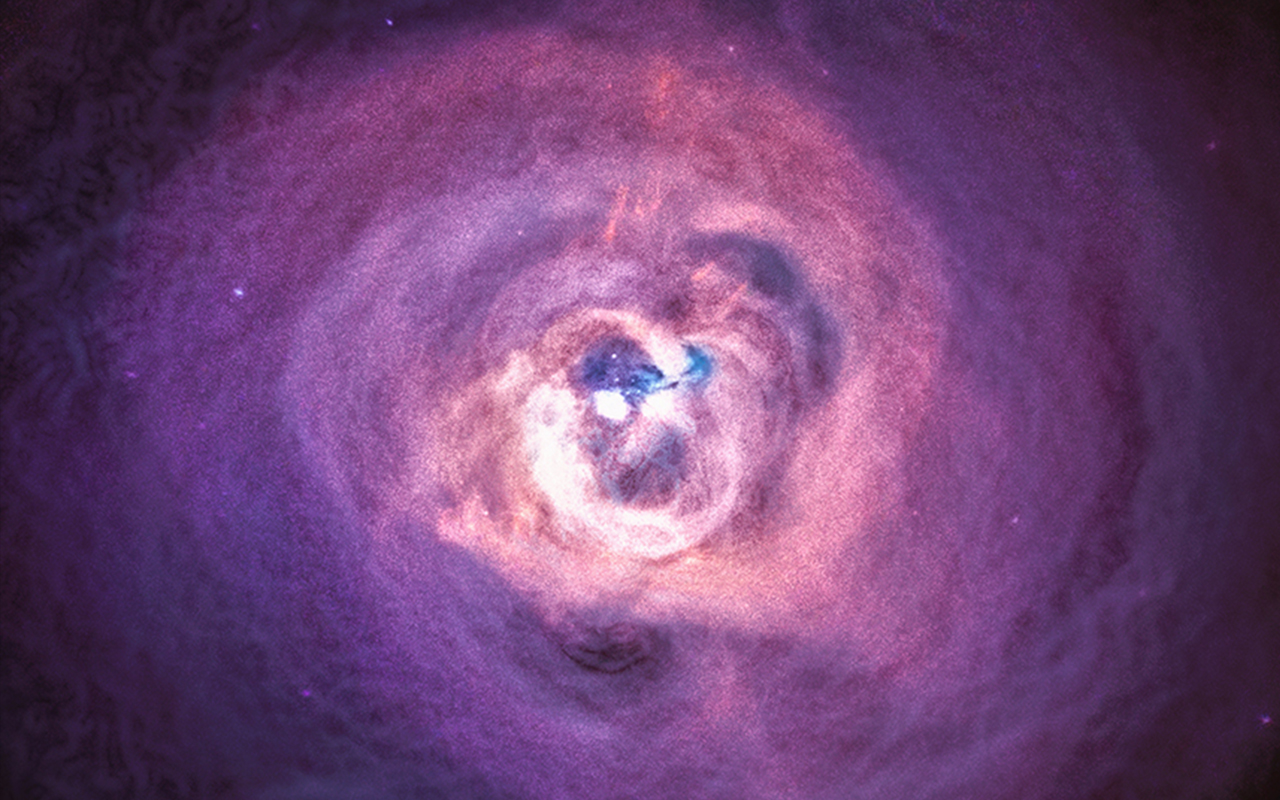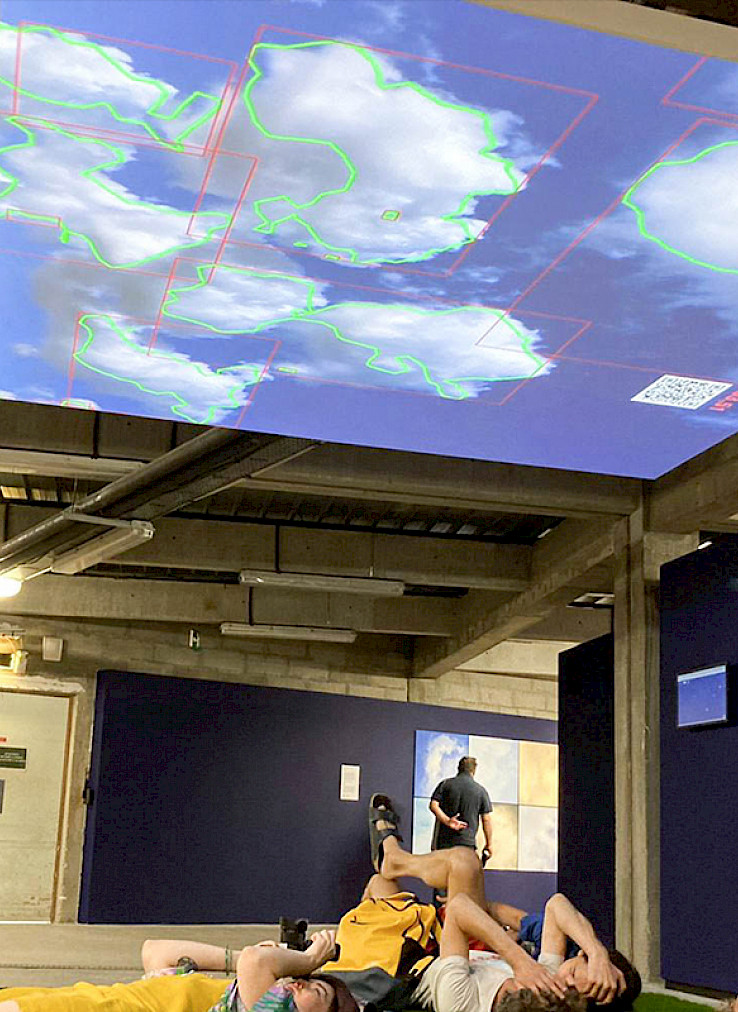CAUTION: PLEASE, STARE AT THE DISPLAYED IMAGE (ABOVE) FOR 10 SECONDS. THEN, READ THE TEXT BELOW.
Astronomical images are fundamentally different from other types of images since they are, ontologically, rather more ‘mental’ than ‘material’. The ‘mental’ layer of the astronomical images recalls reception into the picture which is exceedingly related to cognition. Therefore, it is necessary to fathom astronomical images not from the Eye’s Mind but from the Mind’s Eye. Thus, this interactive text shifts the perspective from the Eye’s Mind to the Mind’s Eye with the aim of understanding astronomical images, their creation and their reception in a more critical and encapsulating way.
Primarily, the fundamental question is why are astronomical images mental? In order to answer this question let’s depart from a thought experiment which is introduced by the astronomers Dr. Travis A. Rector, Dr. Kimberly K. Arcand and Megan Watzke in their book Coloring the Universe: An Insider's Look at Making Images of Space (Rector et al., 2015, 4):
“Let’s pretend you had the ability to board a spaceship and fly to the Horsehead Nebula what would you see? After a journey of more than a thousand light-years, you would finally arrive at your destination. You look out of the window of your spaceship at this same scene, but you’re now at a distance one hundred times closer than before, when you were standing on the Earth.” [1]
What the writers trying to accentuate here is that even if you arrive at the Horsehead Nebula you won’t be able to see the nebula itself with your naked eyes. That’s because the astronomical data comes from a range of light outside of the huma vision. Thus, multiple stacks of natively digital data, such as from “invisible” forms of light: radio, microwave, infrared, ultraviolet, X-ray, or gamma ray, travelling from telescopes to scientists in the form of ones and zeros then the scientists make these data adapted to our Eye’s Mind through data visualization. The prior reason for this translation is that our mind is cognitively not trained to grasp the astronomical data and images unless it is transformed to a form that can be fathomed by our mind. Hence, the astronomers most persistently choose the two-dimensional image as a form to display the astronomical data and this translation from ones and zeros to a two-dimensional image is inherently conceived as having an aesthetic layer articulated through image-processing techniques.
As expressed, “Astronomical images exist at an intersection of science and art, of information and aesthetics, of the contextual and the visual (Smith, 2014)” (Smith et al., 2015, 89).
Therefore, it can be stated that astronomers combine science and arts through the process of data visualization which involves aesthetic concerns and touches. Yet, these aesthetic concerns and touches are a consequence of cognitively making sense of the astronomical images taking human vision as a reference point. Hence, these aesthetic touches simultaneously function in two layers; primarily, these touches provide the data itself for the scientist to work on and also, they trigger an aesthetic experience for the public based upon a reality which is not visible to direct human experience embodying a lack of functional coherence. Accordingly, these images are adapted to the Eye’s Mind adding material precisions while arranging the composition of the astronomical images such as color, scale, orientation, depth, texture, brightness, contrast, sharpness…
What if we try to fathom these astronomical images not through the Eye’s Mind but through the Mind’s Eye? This question brings about the ‘mental’ layer into the picture as expressed in the beginning of this text which includes cognition and consecutively reception.
Here, if we consider the cognition of astronomical images as the data that enters to the human mind and the reception of it as the output of that data in relation to a priori data that we have on astronomical images, we can easily claim that astronomical images have the capacity to surpass the limits of our knowledge in creative ways which forges an opportunity to reconstruct our experience aesthetically and even scientifically. The precise reason behind this inference is that our cognition and reception on astronomical images, ontologically, cannot depend on our vision since we are not capable of seeing with our naked eyes. Therefore, our Mind’s Eye is shaped by the astronomers’ translation of astronomical data into astronomical images. Therefore, our Mind’s Eye, in the context of astronomical images, solely grounds on these almost always aesthetically pleasing mostly two-dimensional images.
Although our Eye’s Mind nourishes our Mind’s Eye and our Mind’s Eye, reciprocally, nourishes our Eye’s Mind on the mental construction of the astronomical images, distinct from our Eye’s Mind, our Mind’s Eye is open to multi-sensory data since our cognition and reception is shaped by multi-sensory data. Consequently, our cognition and reception on the astronomical images themselves can be altered if another sensory information is articulated to the visual data that is received on astronomical images.
Consequently, it is crucial to differentiate astronomical images from the other types of scientific images since our cognition and reception is beyond materiality and therefore, the relationship that we establish with the astronomical images in the case of (mis)trust is closely related to how the scientists translate the scientific data into astronomical images and what forms of articulation and layers are included into this translation to influence the (mis)trust of people towards the astronomical images.
In order to explicitly show this to you, we invite you to see the previous astronomical image with a layer of sound (as scientific data) added to the reception of the act of seeing through the Mind’s Eye.
CAUTION: PLEASE, PLAY THE VIDEO BELOW AND DO NOT FORGET TO PUT THE SOUND ON.
After seeing this astronomical image with a sound layer added to it, we want you to answer yourselves, if you have a distinct reception to the same astronomical image or not?
You can send your answers and comments to these email addresses: pr.visualtrust@ub.edu, alkimerol@ub.edu
---
References:
Lisa, F Smith, K Arcand Kimberly, K Smith Jeffrey, K Smith Randall, and Bookbinder Jay. 2015. “Is That Real? Understanding Astronomical Images.” Journal of Media and Communication Studies 7 (5): 88–100. https://doi.org/10.5897/JMCS2015.0446.
Rector, Travis, Kimberly Arcand, and Megan Watzke. 2015. Coloring the Universe: An Insider’s Look at Making Spectacular Images of Space. Illustrated edition. Fairbanks: University of Alaska Press.
Smith, Lisa F. 2014. “The Science and Aesthetics of Astronomical Images.” Psychology of Aesthetics, Creativity, and the Arts 8: 506–13. https://doi.org/10.1037/a0037122.
Source of the image: Black Hole at the Center of the Perseus Galaxy Cluster (X-Ray). Credit: Credit: NASA/CXC/Univ. of Cambridge/C. Reynolds et al. Check for scientificdetails: https://chandra.si.edu/photo/2020/perseus/
Source of the video: Data Sonification of a Black Hole at the Center of the Perseus Galaxy Cluster (X-Ray). Credit: X-ray: NASA/CXC/Univ. of Cambridge/C. Reynolds et al.; Sonification: NASA/CXC/SAO/K.Arcand, SYSTEM Sounds (M. Russo, A. Santaguida). Check for the scientific details: https://chandra.si.edu/photo/2022/sonify5/
[1]The iconic Horsehead Nebula is part of a dense cloud of gas in front of an active star-forming region known as IC 434 (Rector et al., 2015). Here, you can access the image and the scientific details: https://noirlab.edu/public/images/noao0126a/. Credit: T. A. Rector (NOAO/AURA/NSF) and the Hubble Heritage Team (STScI/AURA/NASA).






